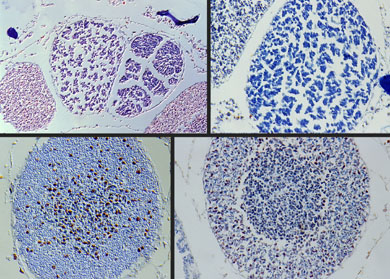Gastrulation in sponges
The term ‘gastrula’ was established by Haeckel in 1872 after
several years of studying the development of calcareous sponges. He proposed
that all metazoans passed through a gastrula stage, and that the embryonic
germ layers were therefore homologous among all metazoans, a concept he
termed the Gastraea-Theory (Haeckel 1874).
|
 |
| Ironically, because his theory hinged on finding a common feeding stage
during the development of all metazoans, what he called the sponge gastrula
was in fact the adult, feeding sponge. In recent texts gastrulation is defined
as the highly integrated movements of cells of the blastula that form a
multi-layered embryo in which the outer layer, the ectoderm, gives rise
to the future skin and nervous tissues and the inner layer, the endoderm,
gives rise to many other components of the adult organism including the
skeleton and organs, in particular, the gut. Gastrulation therefore contains
two elements: the formation of a multilayered organism and the formation
of a digestive system. Though in most organisms these events occur simultaneously,
in sponges and in many cnidarians these two processes are separate. |
Developmental stages in the demosponge Reniera - (Invertebrate
Biology 2002, 121:171-189)
For a complete review of Gastrulation in sponges see a Chapter by Leys
in Gastrulation: from cells to embryos edited by Claudio
Stern (Cold
Spring Harbor Press 2004) |
